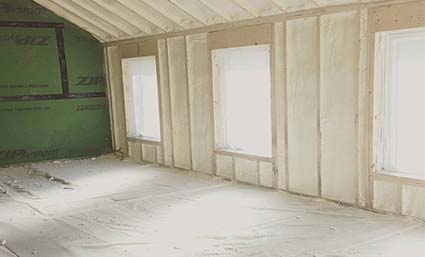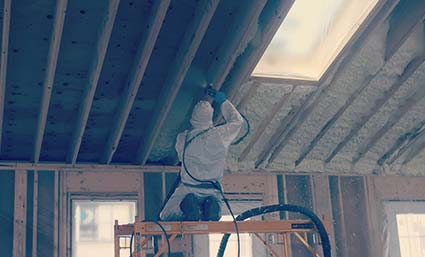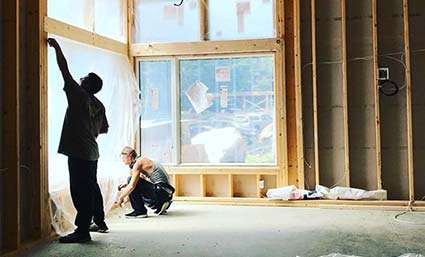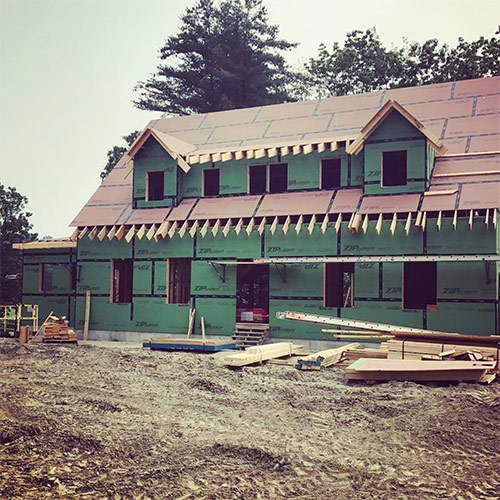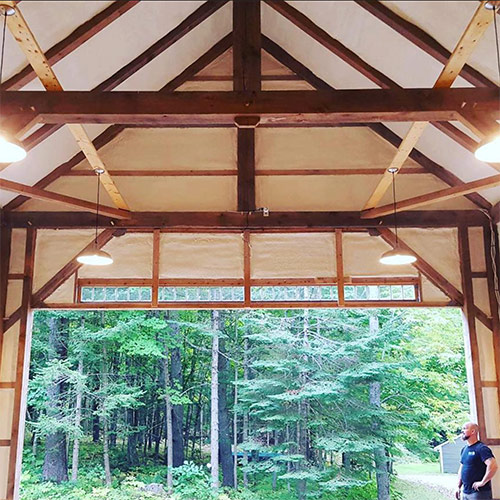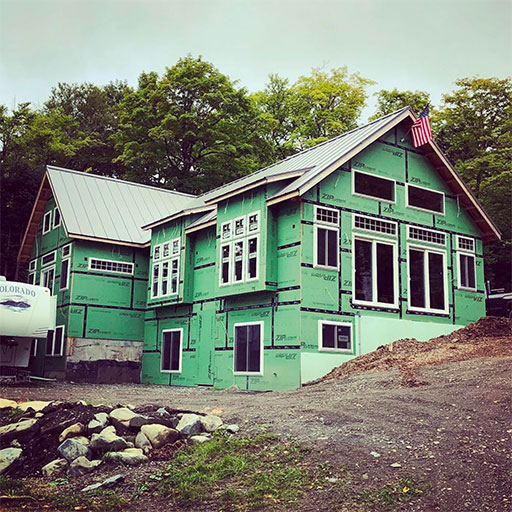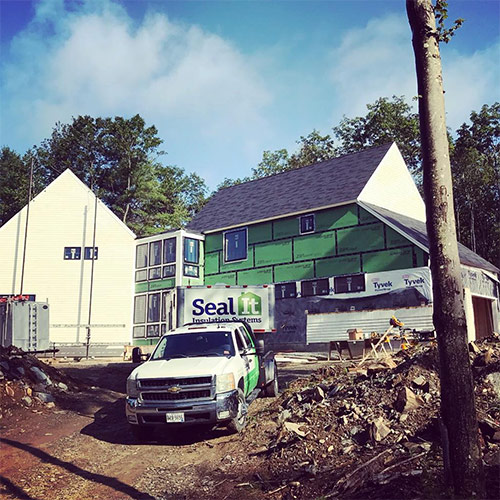Spray foam insulation has swiftly gained recognition as a preferred choice for enhancing energy efficiency in both residential and commercial properties alike. Its impressive thermal performance and capacity to prevent energy loss make it an ideal solution.
However, one common question among property owners is: “How thick should spray foam insulation be?”
The answer lies in the type of spray foam used and the specific application, as each style has different requirements to achieve optimal results. This post will explore the recommended thickness for closed-cell and open-cell spray foam insulation.
Closed-Cell Spray Foam Insulation
Closed-cell spray foam insulation is known for its excellent R-value and compact cellular structure. The R-value serves as a gauge of an insulation material’s heat resistance, and closed-cell foam typically surpasses its open-cell counterpart.
To ensure effective insulation with closed-cell spray foam, the following thickness guidelines are recommended:
- Walls: A moderate 2 – 3 inches thickness provides superior thermal performance and an effective airtight seal for walls.
- Roof Deck: Given its prolonged exposure to external temperatures, the roof deck needs a thicker application. A 4 – 5 inches thickness guarantees optimal insulation, keeping in check undesirable heat gain or loss through the roof.
Open-Cell Spray Foam Insulation
Open-cell spray foam insulation is characterized by its lower density and a more open cellular structure. It excels in sound absorption and is often used in interior applications.
When considering open-cell spray foam, these thickness recommendations apply:
- Walls: Similar to closed-cell foam, a 2 – 3 inches thickness is recommended for interior and exterior walls to provide adequate insulation and effective air sealing.
- Roof Deck: The roof deck requires a thicker application of open-cell foam due to its comparatively lower R-value. Aim for a thickness of 6 – 10 inches to ensure sufficient insulation and maintain balanced indoor temperatures.
Factors Influencing Thickness Requirements
While the recommended thicknesses provide a fundamental guideline, several factors and considerations influence the insulation prerequisites tailored to your specific project:
- Climate Zone: Properties in colder climates will benefit from thicker insulation to counteract volatile temperature fluctuations.
- Building Design: The building’s dimensions, layout, and structural composition can impact how much insulation is needed to achieve the desired energy efficiency.
- Building Codes: Local building codes and energy efficiency standards might dictate minimum insulation requirements that need to be met.
- Energy Goals: If you aim to achieve a specific energy efficiency, you may need to adjust the insulation thickness accordingly.
Curious about the thickness needed for your spray foam insulation? It’s always a good idea to consult an insulation contractor. They can help you determine the best insulation type and thickness for your unique situation, helping you reduce energy costs and achieve a sustainable future.
Spray foam insulation is a popular option due to its cost-effectiveness and eco-friendly qualities. Remember, every project is different, so talking to experienced professionals before you start can save you time and money.
If you’re ready to learn whether your home is ready for spray foam insulation, get a free quote from Seal It Insulation Systems today!

